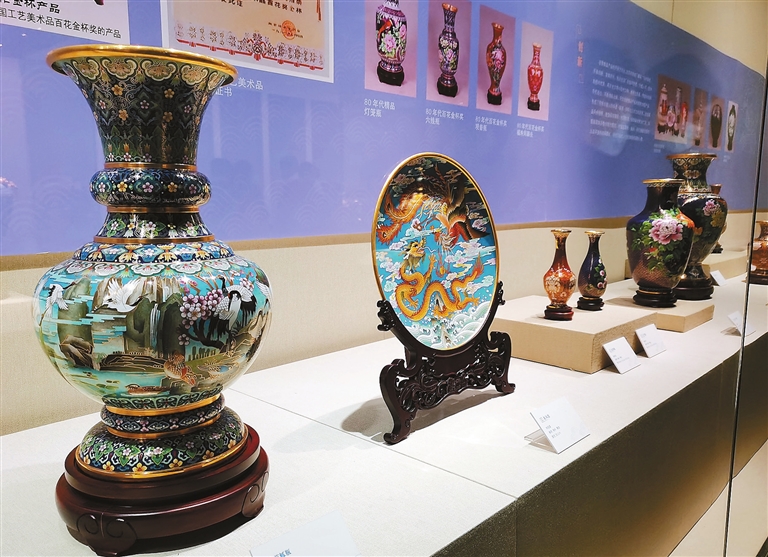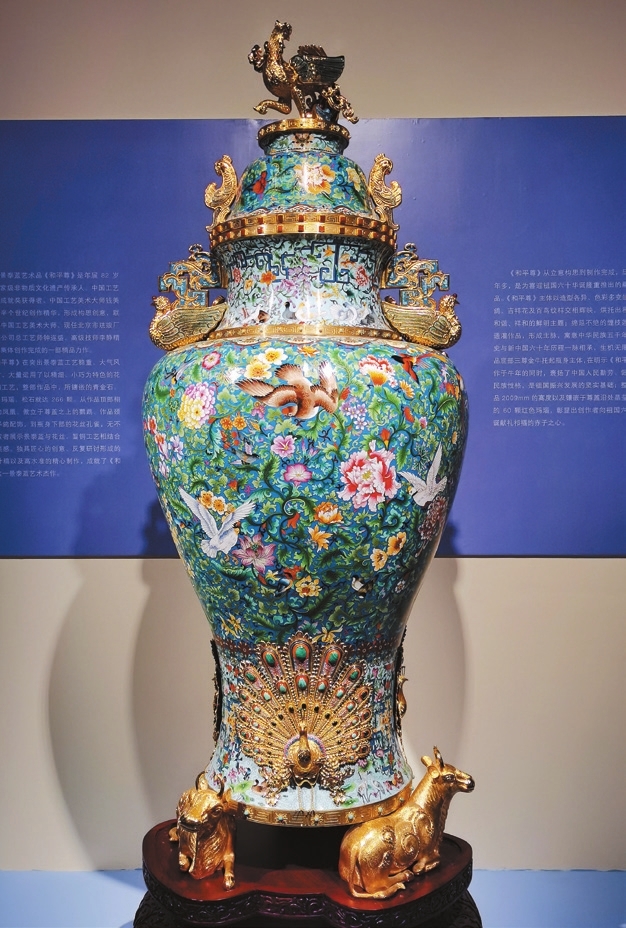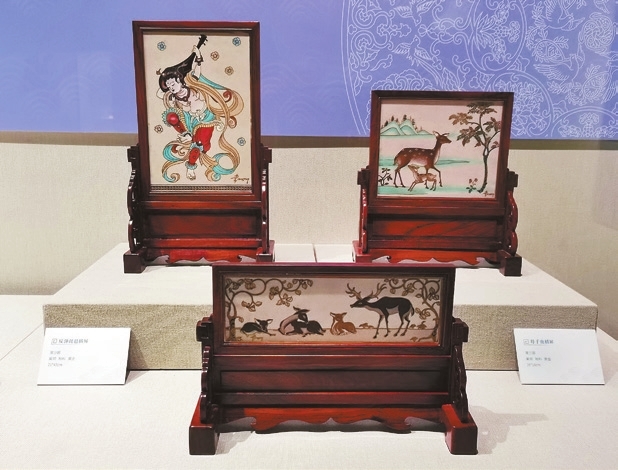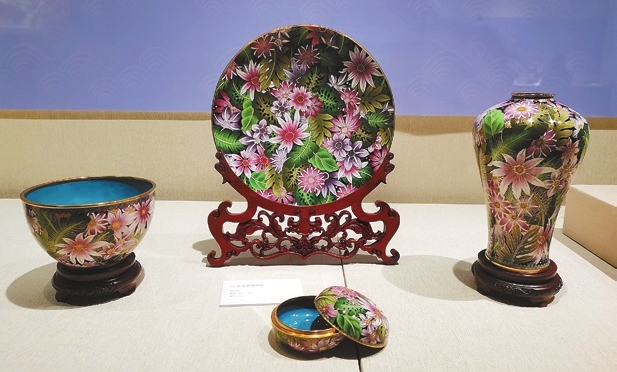



Cao Zhen caozhen0806@126.com With a 600-year history, Chinese cloisonné, or jingtailan, is a significant traditional craft renowned for its integration of fine art, carving, inlay, glass firing and metallurgy. From the Yuan Dynasty (1271-1368) to now, Chinese cloisonné works present specific artistic styles in different periods and after experiencing its heyday, decline and revival over the past six centuries, the craft has become an important carrier to connect China with the world. A newly-opened exhibition at the Shenzhen Museum showcases more than 100 modern Chinese cloisonné works provided by the Beijing Enamel Factory, offering a glimpse into the history of the traditional craft and the latest techniques. Four sets of works produced in the early 20th century are very exquisite; although enamel colors used are not as rich as recent ones, they still show unique elegance. A 2.09-meter-tall ware bearing the patterns of peace doves, colorful flowers and birds created by masters Qian Meihua, Zhong Liansheng and Li Jing in 2009 is the most striking piece at the exhibition, representing a very high level of the Chinese art. Other Chinese cloisonné wares by Zhong and those with patterns designed by veteran artist Chang Shana are also on display. Growing up around the Mogao Caves where her father worked, Chang’s art was greatly influenced by these ancient murals. Now in her 90s, she maintains her dedication to innovating within old crafts. Some cloisonné wares at the exhibition bear patterns of Dunhuang murals and her paintings of flowers. Zhong also embodies the spirit of the times into his artworks, trying to give traditional crafts a modern context. Many of the masters’ works have been chosen as national gifts to foreign leaders. Introduced from the Arab countries during the Yuan Dynasty and becoming popular during the Ming Dynasty (1368-1644), cloisonné uses copper as its body, with patterns structured with copper or gold wires and painted with enamel glaze. Founded in the 1950s, the Beijing Enamel Factory is the biggest and most professional factory making cloisonné works in China. In addition to wares with traditional patterns of flowers and birds, recent themes such as combating COVID-19 are also featured on some wares to let visitors feel the charm of the Chinese cloisonné in modern life. Dates: Until Feb. 16 Hours: 10 a.m.-6 p.m. (closed Mondays) Booking: WeChat account “iszbwg” Venue: Shenzhen Museum (of History and Folk Culture), Futian District (福田区深圳博物馆历史民俗馆) Metro: Line 2 or 4 to Civic Center Station (市民中心站), Exit B | 
